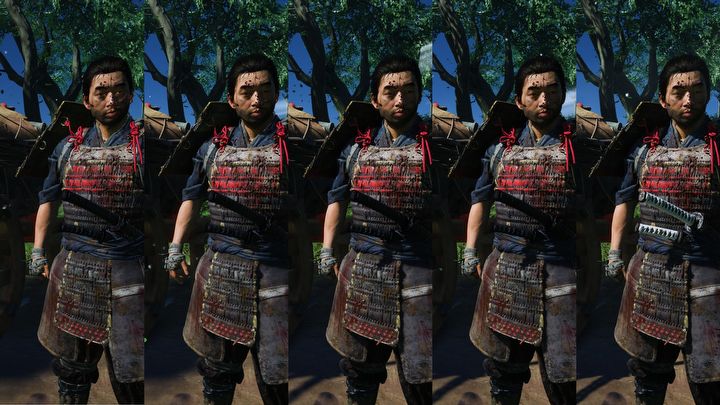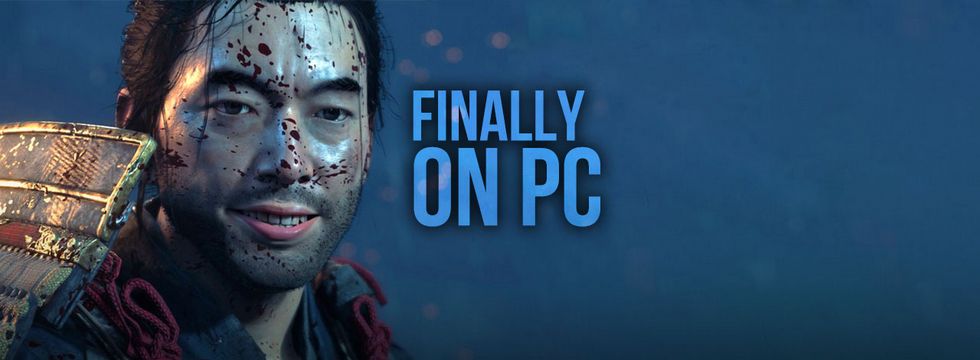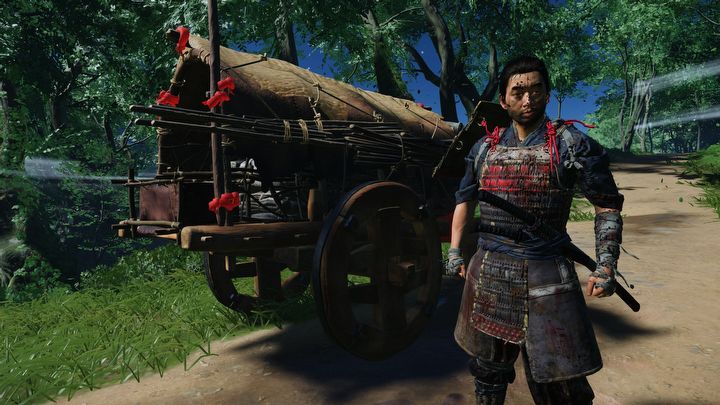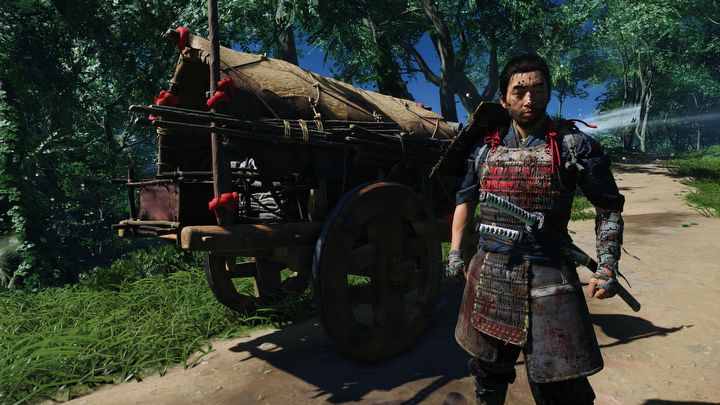Technical Review of Ghost of Tsushima: Director's Cut on PC
Sony has a good run - the hits from PlayStation consoles ported to PC are very high-quality and offer stable gameplay. Ghost of Tsushima is no different.
It's a good time not to have a PlayStation 5. High-profile titles that were previously exclusive to the Sony console are now stylishly coming to PCs, albeit with quite substantial requirements.
The same goes for Ghost of Tsushima: Director's Cut. We received the game in a very good technical condition, devoid of major technical problems. Everything simply works so reliably that we don't even think about the technical aspect of the game.
- stable performance,
- we can play even on weaker computers,
- on latest graphic cards we can play with a high frame rate.
- keyboard controls deprive the game of some of its atmosphere,
- occasional problems with textures,
- slight differences between graphic settings.
The mouse and keyboard controls have been fairly well adapted, although it took me a while to adjust, especially getting the feel for blocking and dodging during combat, which feels more natural when using a controller.

The game sometimes fails to load textures correctly.Ghost of Tsushima: Director's Cut, Sony Interactive Entertainment, 2024
A keyboard and mouse work good, but they won't offer the complete experience of PlayStation 5 or even PlayStation 4. Numerous elements were excellently designed to make use of the controller's capabilities - vibrations, built-in speaker, and touch panel. If we haven't had the opportunity to play on the console, the impressions will probably be good, but with a comparison - there is a sense of dissatisfaction. These small details really create a great atmosphere, which is essentially the most important element of this title.
The matter of logging into the PlayStation Network is also worth mentioning, particularly given the reactions it has provoked in recent weeks with other games, especially in Helldivers 2. In Ghost of Tsushima, we don't have to log in to PSN on PC if we only want to play the single-player mode. We are actively encouraged to do this the first time we start the game, but we can easily play the story mode without logging in.
THIS IS NOT A GAME REVIEW
This isn't a game review. In this text, I am omitting the question of whether Ghost of Tsushima: Director's Cut is a good game. I don't judge the plot or mechanics. My only focus is on ensuring smooth performance across devices of varying capabilities, from an older budget laptop to a modern mid-range PC.
Test platforms
I used four devices for the tests - two laptops and two personal computers. Some of them are quite old, and the most recent one represents the mid-range, as that's how the RTX 4070 Ti is positioned.
The most important components of the used equipment are as follows:
- Acer Nitro 5 laptop: Intel Core i7-9750H, GeForce GTX 1650, RAM: 16 GB 2666 MHz
- PC 1: Intel Core i7-9700K, MSI GeForce RTX 2060 Ventus OC, RAM: 16 GB 2666 MHz
- ASUS ROG Strix G15 laptop: AMD Ryzen 7 6800H, GeForce RTX 3060, RAM: 16GB 4800 MHz
- PC 2: Intel Core i7-13700K, MSI GeForce RTX 4070 Ti GAMING X TRIO, RAM: 64 GB 6000 MHz
I played on all devices in Full HD resolution without a frame limit. Wherever it was possible, I also tested DLSS in "quality" mode. In the case of the GTX 1650 card, I decided to go with FSR 3.0 in "quality" mode.
Ghost of Tsushima: Director's Cut system requirements
Ghost of Tsushima: Director's Cut has quite low system requirements. According to the publisher's declaration, we will be able to run the game even on an older PC. The recommended configuration requires slightly more powerful hardware, although the requirements are probably met by most several-year-old PCs.
MINIMUM REQUIREMENTS: | RECOMMENDED REQUIREMENTS: | |
Processor | Intel Core i3-7100 / AMD Ryzen 3 1200 | Intel Core i5-8600 / AMD Ryzen 5 3600 |
RAM | 8 GB RAM | 16 GB RAM |
GPU | Nvidia GeForce GTX 960 / AMD Radeon RX 5500 XT | GeForce RTX 2060 / AMD Radeon RX 5600 XT |
Storage | 75 GB of available space (SSD recommended) | 75 GB of available space (SSD required) |
Very low and very high settings are surprisingly similar
Ghost of Tsushima: Director's Cut offers 5 pre-set graphic options: very low, low, medium, high, and very high. However, the various settings don't differ significantly, and even on the lowest ones the game looks quite good.

Differences can be seen in some locations primarily in the quality of shadows.Ghost of Tsushima: Director's Cut, Sony Interactive Entertainment, 2024
Sometimes the lowest settings are treated by the developers as a lifeline for players with very weak PC setups, which is reflected in noticeably lower texture quality, lack of shadows, and ugly vegetation. However, there is no room for this here, and while the differences in the number of frames are clearly visible between modes, the visual effects are primarily cosmetic. So we can confidently lower the settings a bit to gain fluidity.
Below you will find screenshots of each of the main graphics settings.
Ghost of Tsushima on older computers with GTX 1650 - it's playable, although it will lack smoothness
The older GTX 1650 in a laptop is unlikely to be suitable for gaming at the highest settings, which should come as no surprise to anyone. Playing in such mode is practically pointless, because 19 fps is definitely too low.
Theoretically, average settings give us around 30 fps, however, these aren't stable values. Enjoying the game becomes quite challenging with a visibly choppy image due to a significant drop in frame rate during more dynamic scenes.
Choosing a very low or low setting is definitely the better option, as it should provide enough smoothness during gameplay while still maintaining a satisfactory image quality.
Enabling FSR will increase the frame rate, but it may not provide the most stable experience, as indicated by the 99% figure in the table below - frames tend to experience larger drops, sometimes unpredictably. In my case, it happened with FSR on low settings.
The values in the table are the average number of frames. In brackets, the 99% fps rate.
Settings/equipment | Acer Nitro 5 Laptop (GTX 1650) | With FSR 3.0 enabled in quality mode |
very low | 42 fps (37 fps) | 54 fps (33 fps) |
low | 39 fps (27 fps) | 49 fps (22 fps) |
medium | 29 fps (20 fps) | 39 fps (25 fps) |
high | 23 fps (19 fps) | 32 fps (24 fps) |
very high | 19 fps (15 fps) | 22 fps (18 fps) |
Recommended settings: low with FSR.
What do the frame numbers in the tables mean?
The numbers in the tables represent values read in Hiyoshi in the evening between the hot springs. This is a fairly standard location and we should experience similar performance while traversing Tsushima.
The average frame rate gives an overall indication of the performance of a given hardware. The 99% indicator, in turn, focuses on game stability - only 1% of the time the game runs with fewer frames than this value. The closer the result is to the average, the better - then the image should be stable, and any frame drops should be small.
Ghost of Tsushima on RTX 2060 - no wonder it's the recommended configuration
My setup with the RTX 2060 has a stronger CPU than the recommended settings, but it perfectly matches in terms of the graphics card. The results support the devs' recommendations - indeed, this card is adequate for playing at a good quality and satisfactory smoothness. This can be considered a starting point, and in general, any card stronger than the RTX 2060 should perform very well with the game.
Without DLSS, only the low and very low settings will actually give us a guarantee of maintaining 60 fps, but by activating the booster we will also be able to select medium and high presets. And with these letter settings, this card performs the best. Everything runs smoothly, and even in the most demanding scenes, we have enough reserve not to worry about temporary frame drops.
The values in the table are the average number of frames. In brackets, the 99% fps rate.
settings/equipment | PC 1 (RTX 2060) | With DLSS enabled in quality mode |
very low | 74 fps (62 fps) | 104 fps (95 fps) |
low | 67 fps (59 fps) | 97 fps (84 fps) |
medium | 62 fps (55 fps) | 87 fps (77 fps) |
high | 59 fps (51 fps) | 76 fps (69 fps) |
very high | 43 fps (26 fps) | 56 fps (48 fps) |
Recommended settings: high with DLSS.
Ghost of Tsushima on RTX 3060 - it's smooth
With an RTX 3060 or a similar graphic card, we should be able to play smoothly on any graphics quality setting without encountering major issues. Even here, it's worth turning on DLSS to ensure a minimum of 60 fps even at the highest presets.
If we don't want to use DLSS, it's worth lowering the settings to high to have more comfort and a certain reserve of frames for more demanding locations or scenes. The 60 frames threshold will remain out of reach at the highest settings.
The values in the table are the average number of frames. In brackets, the 99% fps rate.
settings/equipment | ASUS ROG Strix G15 Laptop (RTX 3060) | With DLSS enabled in quality mode |
very low | 93 fps (80 fps) | 108 fps (91 fps) |
low | 88 fps (73 fps) | 95 fps (81 fps) |
medium | 79 fps (64 fps) | 90 fps (72 fps) |
high | 71 fps (58 fps) | 85 fps (70 fps) |
very high | 55 fps (49 fps) | 75 fps (63 fps) |
Recommended settings: very high with DLSS.
Ghost of Tsushima on RTX 4070 Ti - the game isn't a challenge for the graphics
We can play Ghost of Tsushima: Director's Cut at the highest settings without being overly concerned about fluidity, thanks to our powerful and relatively new gear. However, if there was a lack of smoothness, DLSS should solve the issue.
By the way, I launched frame-generation tool that allows for increasing the number of frames on the highest settings to about 250, and sometimes even surpassing the 300 fps barrier. This option will be especially useful for those playing in higher resolutions.
The values in the table are the average number of frames. In brackets, the 99% fps rate.
settings/equipment | PC 2 (RTX 4070Ti) | With DLSS enabled in quality mode |
very low | 179 fps (158 fps) | 185 fps (163 fps) |
low | 172 fps (146 fps) | 177 fps (148 fps) |
medium | 162 fps (130 fps) | 170 fps (141 fps) |
high | 153 fps (134 fps) | 163 fps (141 fps) |
very high | 116 fps (93 fps) | 146 fps (117 fps) |
Recommended settings: very high with DLSS.








